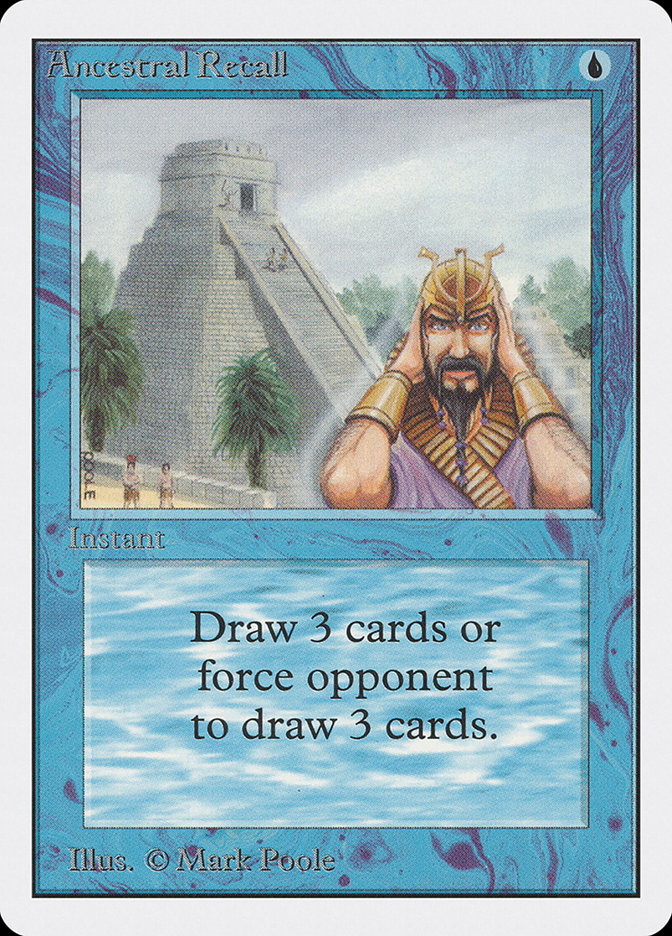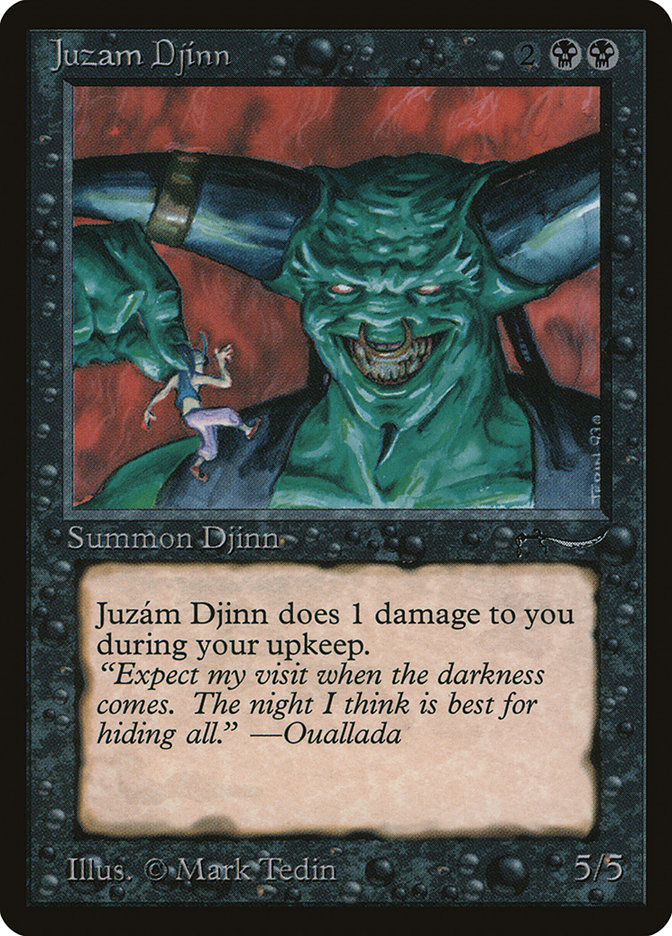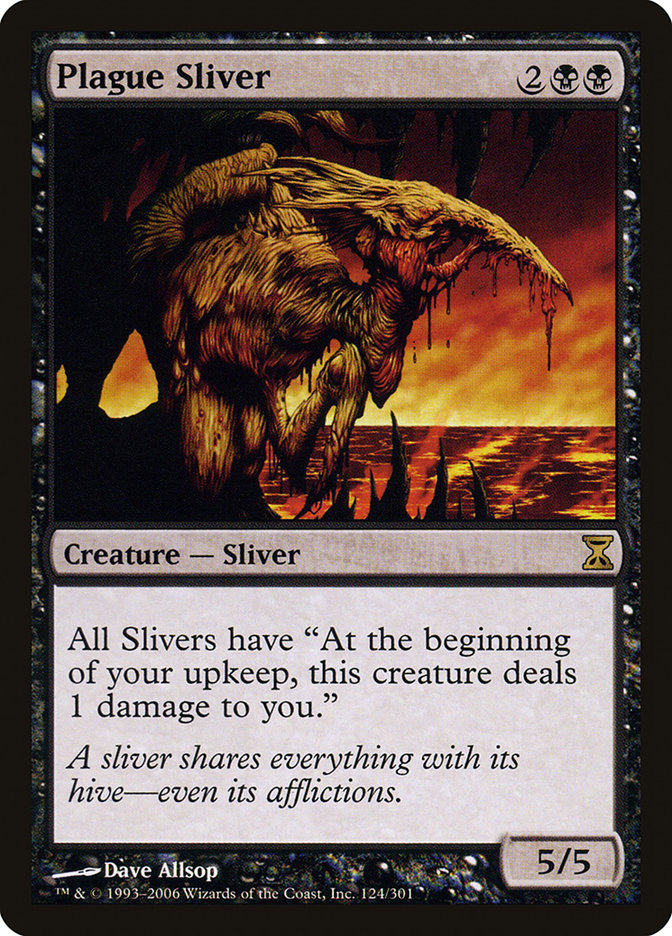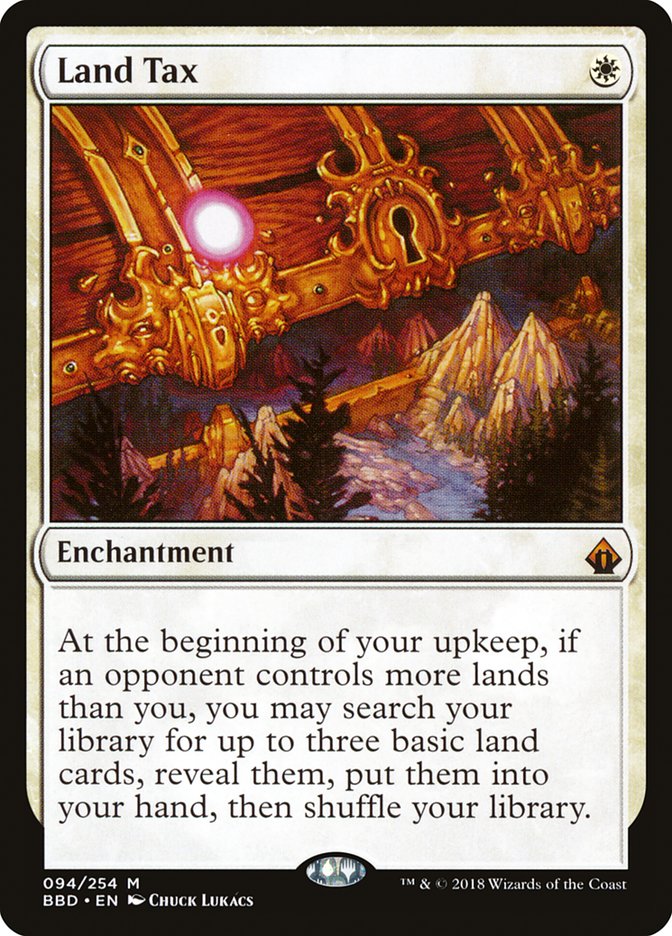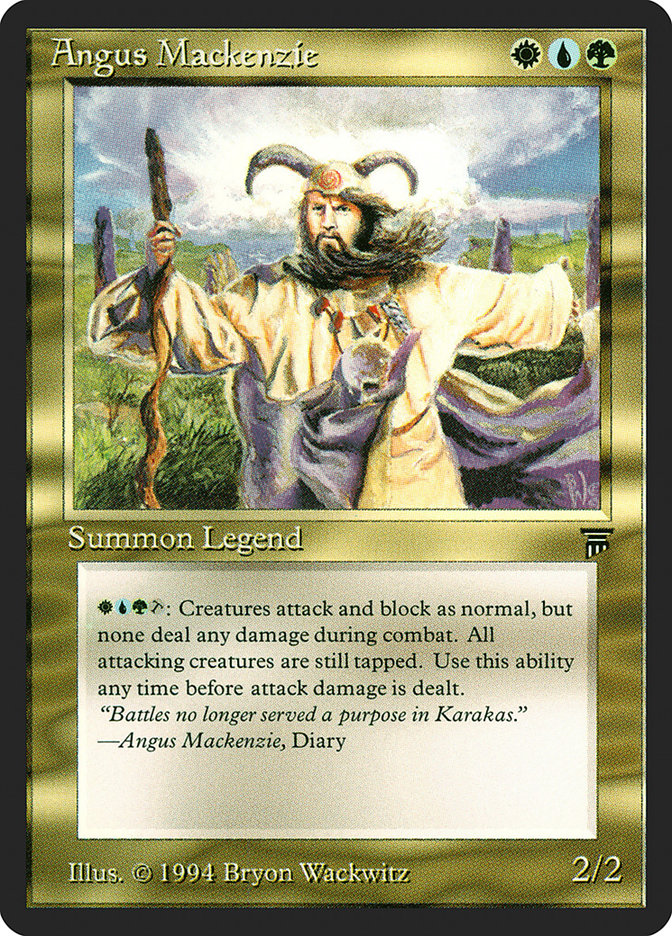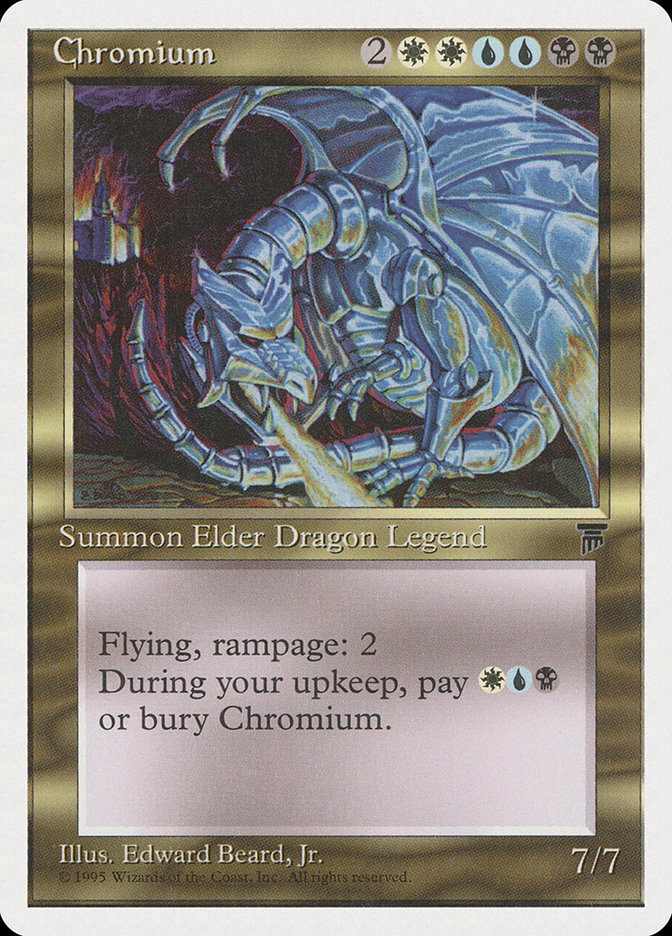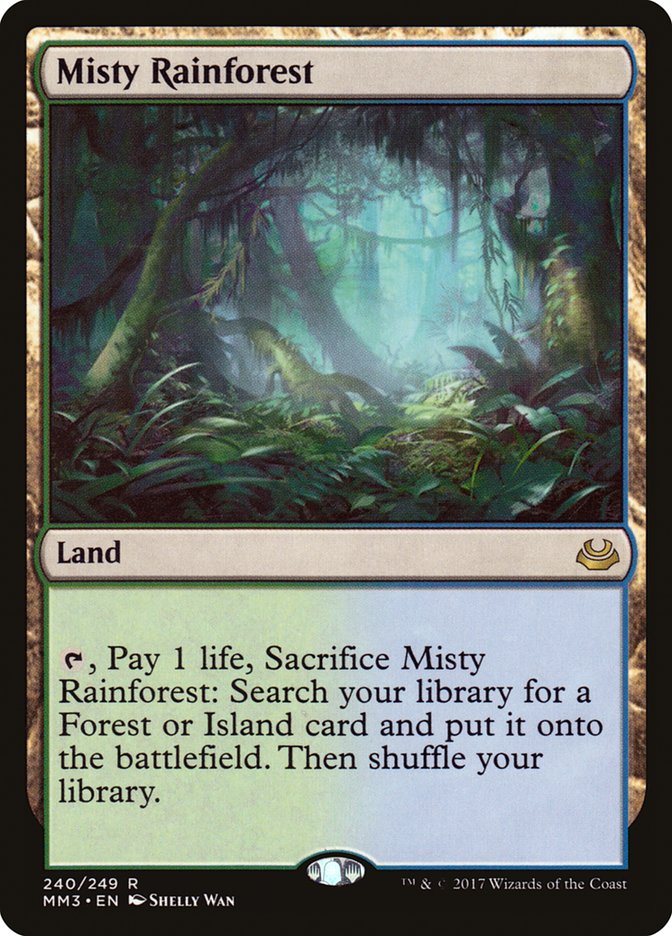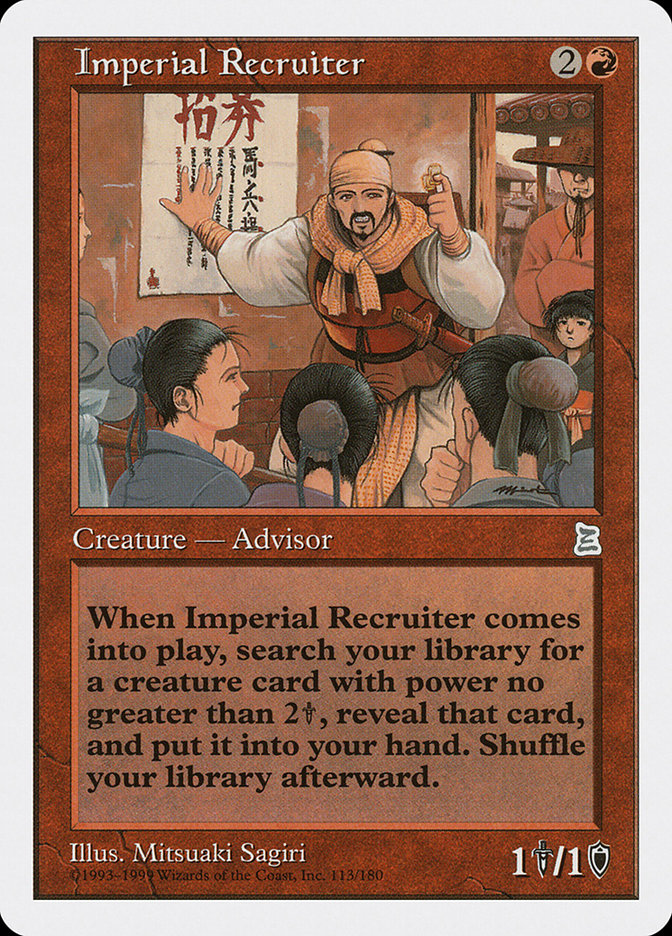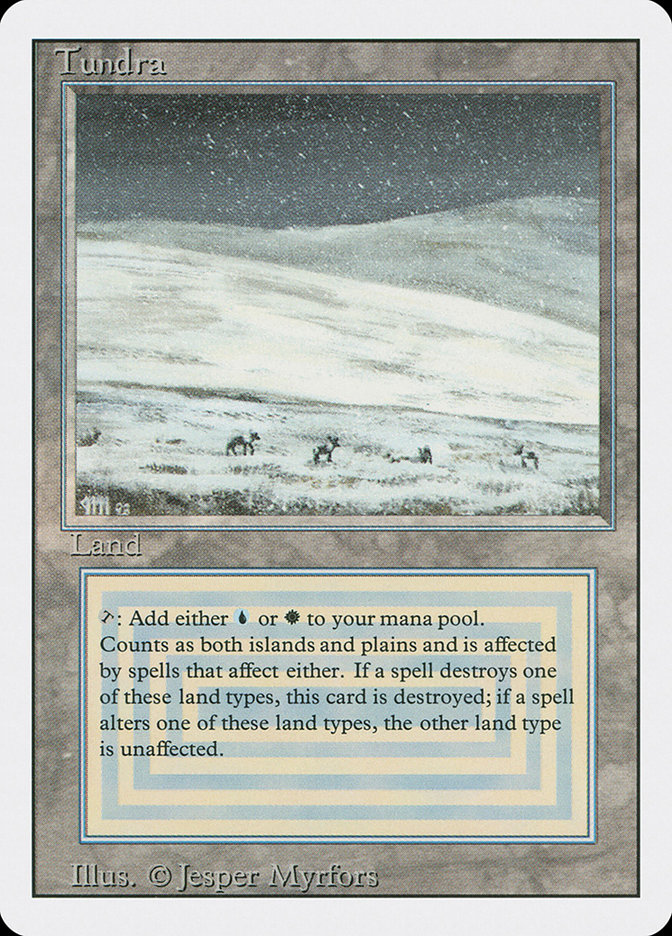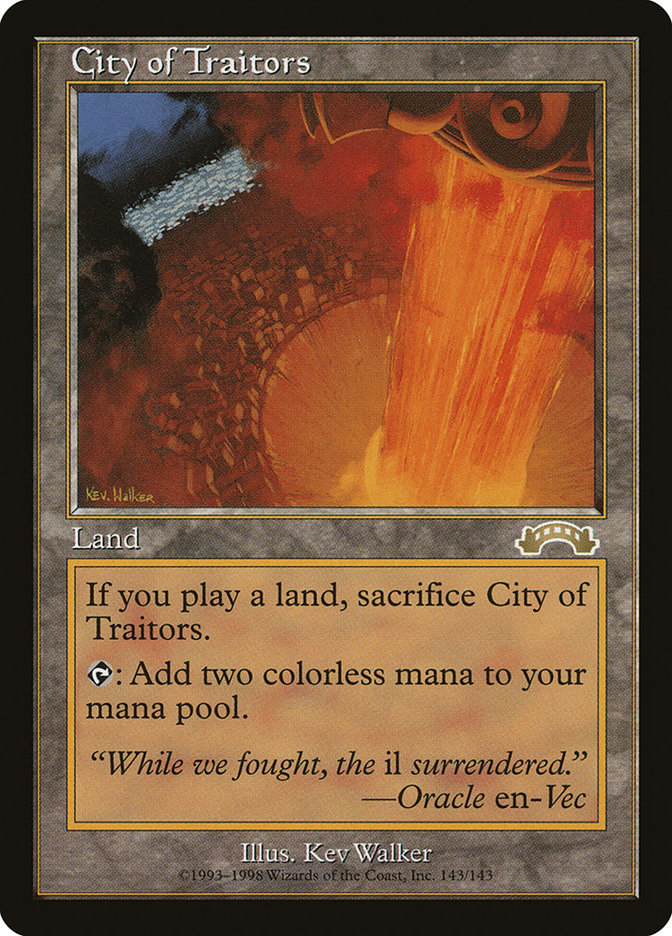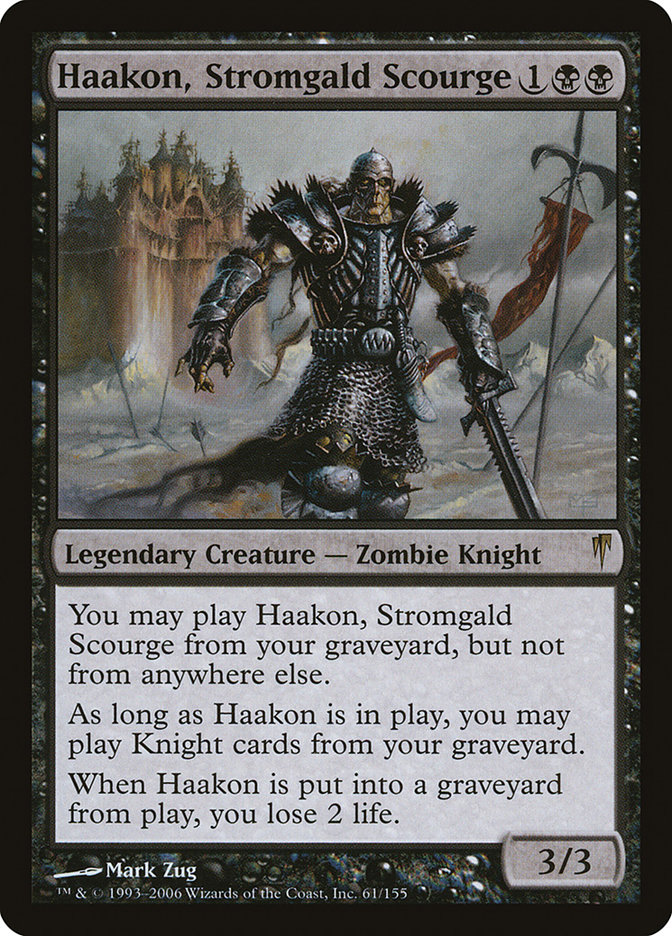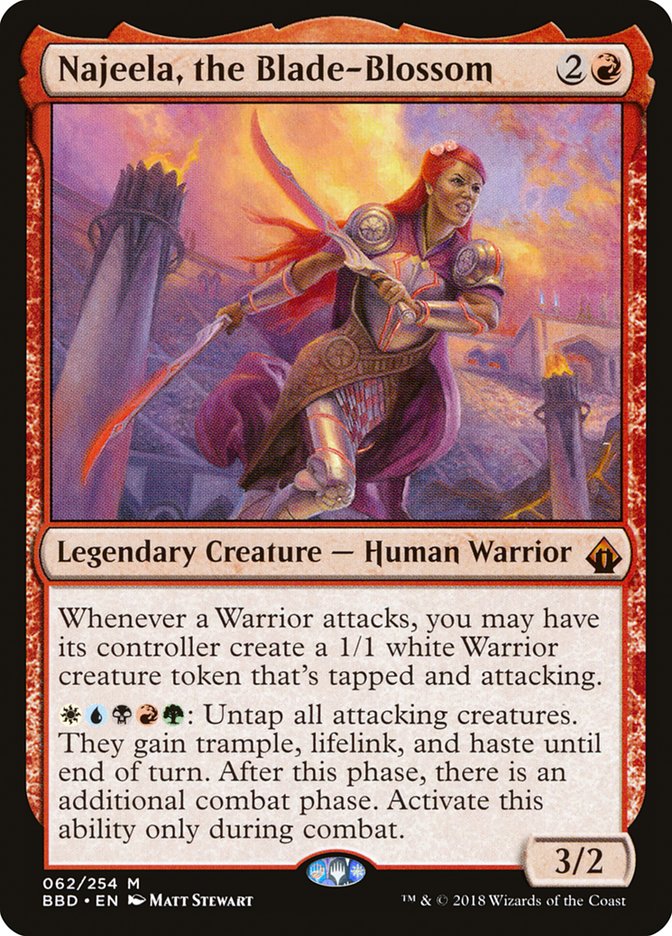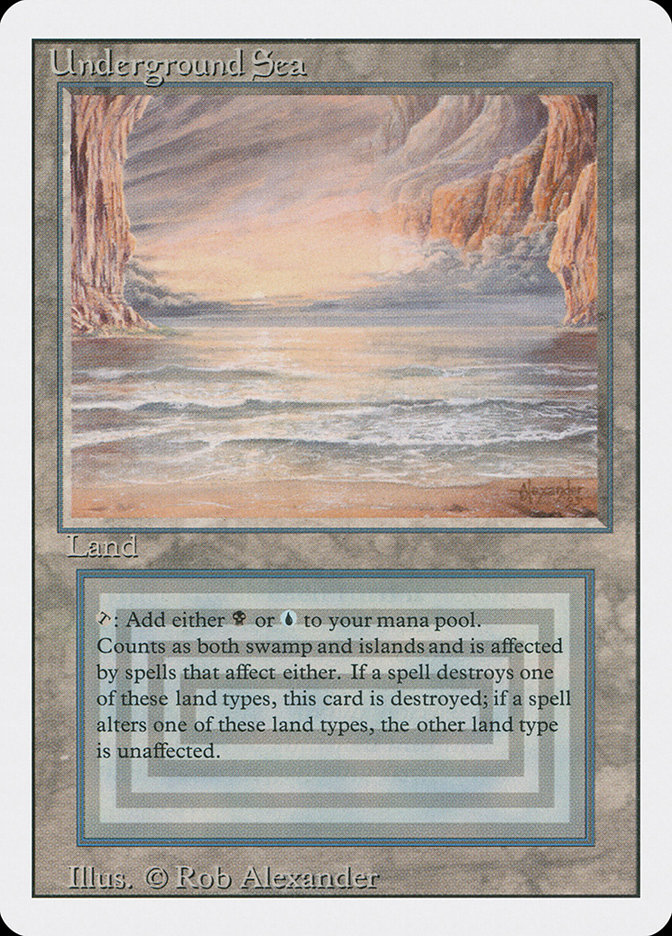Getting a group of Magic players to agree on anything is almost impossible.
Ask a draft pod about their favorite format, the best deck in Standard,
or-God forbid-whether Magic is better now than it was five years ago, and
you’ll end up with a squabbling mess.
There is one issue, however, that everybody seems to agree on: the Reserved
List is a bad, stupid, backwards policy that is at best inconvenient and at
worse actively killing two of the game’s best formats. The best thing that
WotC could do right now is to kick the Reserved List to the curb and start
drafting plans toward reprinting many of the game’s most iconic cards.
And since that seems to be the consensus viewpoint, the rebellious side of
me felt the need to write an article about why the Reserved List is
actually good. Or, at least, that’s it’s not that bad.
“But Chas,” you say, “You once wrote an entire article entitled ‘
I Hate The Reserved List
!’ Surely this is some kind of stunt designed to generate a massive amount
of traffic for StarCityGames as 50,000 angry Magic players angrily scroll
through your article, skim a few lines, and then shout at you in the
comments section!”
To which I say…well, yeah, kind of. I expect most people to read this
article and still want the Reserved List to be abolished, preferably
immediately. And that’s okay! If I were in charge of these things, I’d
probably axe the Reserved List, too.
But I’ve read hundreds of articles about why the Reserved List is bad, and
not a single one discussing its benefits. And-yes-the Reserved List does
have some benefits. Do they outweigh its problems? That’s for you to
decide. The only personal stance I’m going to be taking in this piece is
that there’s an entire side to this discussion that we’re just not having
right now.
Welcome to the other side.
Magic is More Fun Because Some Cards Are Incredibly Rare
Ancestral Recall is one of the ten best cards in the history of Magic. It’s
gorgeous, iconic, and mythic in the true sense, not in the Tree of
Redemption sense. I can probably recollect every single Ancestral Recall
that I’ve ever held in my hands, and the day I finally got one of my own
was one of the happiest, most thrilling moments of my life as a collector.
I also own an Ancestral Recall on Magic Online. I bought it on a whim for
seven tickets.
When Ancestral Recall was first released on MTGO, it pre-ordered for a
hundred and fifty tickets per copy. This made sense, because…well, it was
freakin’ Ancestral Recall! People dropped over a grand for their digital
set of Power 9, finally ready to play Vintage online for the very first
time.
Wizards of the Coast did not print Ancestral Recall into the ground on
MTGO. They released it a couple of times, but you had to buy Vintage Masters packs or get lucky in a treasure chest. If demand
for Ancestral Recall had remained high, the price could have
sustained…maybe not $150, but at least $50. Instead, its value more or less
collapsed.
There’s a counterintuitive reason why Ancestral Recall is worth almost
nothing on MTGO: the card is simply too good. Ancestral Recall would break
any Constructed format from Legacy forward in half, its banned in
Commander, and casting it in any sort of casual setting feels gross. You’re
pretty much limited to playing Ancestral Recall in Cube and Vintage. That’s
it. And since you can’t build your own Cube on MTGO, there’s no reason to
own an Ancestral Recall at all unless you’re playing Vintage-not exactly
the most popular format on the client.
So why was Ancestral Recall so expensive when it was first released on
MTGO? It was in large part because the card held some amount of mystique,
leading some people to buy in even though they didn’t really have a use for
it. They simply wanted to own a part of Magic’s rich and storied history.
As the card lost the thing that made it feel special, however, the price
just tumbled and tumbled and tumbled until it hit a sub-$10 rock bottom. If
you open an Ancestral Recall in a treasure chest now, you’re likely to be
mildly happy for about ten seconds before moving on with your life.
I see no reason why things would be different if WotC started reprinting
paper versions of the Power 9. They wouldn’t drop all the way to $10, of
course, and demand would be slightly higher due to a larger number of
cubers and other casual players, but we’d eventually end up in the same
place.
“But I really want to own The Power 9!” you say.
To which I ask-why? Is it because they’re super special, vanishingly rare,
almost legendary in their scarcity? Because you’d feel powerful holding a
copy, because you want to show it to your friends, because you want to feel
connected to Magic’s earliest days?
All I’m saying is that all of this stuff goes away or is strongly diluted
once Wizards of the Coast actually reprints the Power 9 and brand new
players are opening Mox Jet and shrugging because the card was reprinted in
three different Masters sets over a five year period. Ask yourself this
question: do you really want a massive Power 9 reprint, or do you
just sort of wish that everything stayed the same only you owned a copy of
Magic’s oldest and rarest cards?
You Don’t Actually Want About 95% of Reserved List Cards
Let’s take a look at Arabian Nights, shall we?
The most expensive card in the set right now is Juzam Djinn. Do you know
what card is effectively a functional reprint of Juzam Djinn? Plague
Sliver, a rare so bad that it’s still just fifty cents despite only being
printed once, in Time Spiral.
Oh, sure, there are a handful of cards in the set that would be fun to own.
Diamond Valley is sweet in Commander, a Bazaar of Baghdad reprint would
make Vintage more affordable, Drop of Honey would help Legacy, and I’d
imagine that cubers would be happy with a cheap copy of Library of
Alexandria. Beyond that, you’re looking at cards like Old Man of the Sea
and Guardian Beast: fun oddities, sure, but bulk rares if they were
reprinted today.
Most of the Reserved List is like this. There are fifteen or twenty cards
(plus the dual lands) that would have sustained demand if they were
reprinted, while the rest are only exciting because they’re so weird and
old and scarce. They’d be exciting reprints precisely once, and then nobody
would care about them ever again. WotC prints hundreds of better cards
every year, too, so it’s not like your casual decks are hurting for
options.
Much like with Ancestral Recall, that weird old scarceness is a large part
of the charm of these cards. Reprint everything on the Reserved List, and
the world starts to feel smaller. Maybe you only own one or two Reserved
List cards, and maybe they’re not actually that good, but they’re special
precisely because of how unique they are. Print a million more copies and
that feeling is lost.
As a quick related aside, there’s a common anti-Reserved List argument that
most of these cards will hold their value even though a reprint because
even if they print more Underground Seas, they aren’t going to print any
more Beta Underground Seas. This is certainly true for Alpha and Beta cards (owning a piece of Magic’s
first-ever set feels amazing!) as well as tournament staples, like
Lightning Bolt.
This argument falls apart once you move into cards that are only slightly
less interesting. Land Tax is a pretty solid example. TheBattlebond reprint is about $20 and on its way down. The Legends version, meanwhile, was worth about $40 until a few weeks
ago, when it spiked to $80. That’s a significant premium, but I honestly
don’t know if that $80 price is stable and regardless, we’re talking about
a card that would be worth upwards of $1,000 if it weren’t on the Reserved
List. Or, heck, look at the difference between the $300 reserved list
staple Angus Mackenzie and the $20-$30 Elder Dragons that were reprinted in Chronicles, like Chromium and Arcades Sabboth. Angus Mackenzie is
slightly better, to be sure, but those Dragons were the most
iconic cards in Legends for many years and they’re worth less than
a tenth the price.
A Reserved List Repeal Probably Wouldn’t Make Legacy Cheap Enough To Cause
a Significant Increase in the Player Base
The most played deck in Legacy right now, Grixis Delver, requires no
Reserved List cards outside of six dual lands. The second most played deck,
Four-Color Control, requires no Reserved List cards outside of seven dual
lands. The third most-played deck, Mono-Red Prison, requires no Reserved
List cards outside of four City of Traitors. For Sneak and Show, you need a
pair of Intuitions, a pair of City of Traitors, and a couple of dual lands.
For Storm, it’s Lion’s Eye Diamond and a couple of duals. Elves? Gaea’s
Cradle and a couple of duals. Miracles? Four duals. Reanimator? Three
duals.
Most of the cards that make Legacy expensive are the same cards that make
Modern expensive: Snapcaster Mage, Liliana of the Veil, Misty Rainforest,
etc. In terms of Reserved List cards, you need somewhere between three and
eight dual lands or perhaps a playset of another land or mana accelerator.
That’s it.
There are several good Legacy decks that don’t run any Reserved List cards
at all, by the way. Or you could simply substitute those three to eight
dual lands with any number of cheaper alternatives for the time being. Most
Legacy games aren’t going to be decided by two damage off a shockland or
whatever. I’ve been preaching this for years, but so few people do it. Why?
Because the Reserved List is so rarely the barrier for entry for
people when it comes to Legacy. Either you can afford to play, at which
point you simply go out and get the dual lands you need, or you’re far
enough behind the curve that you’d need the format to be a lot cheaper for
you to actually consider buying in. A Reserved List repeal alone wouldn’t
do it-you’d need all of Eternal Magic to be a whole lot cheaper.
All too often, “get rid of the Reserved List!” becomes a proxy argument for
“Magic is too expensive and I want to be able to be able to play it for a
much cheaper cost!” I’m super amenable to that argument, and I think that
it’s worth having, but it’s an entirely different discussion.
The Reserved List Was A Bad Idea, But Abolishing It Now Would Do More Harm
Than Good
It’s fun to imagine a world where the Reserved List had never existed. The
first paper Vintage Masters set would have likely arrived at some
point in 2014, bringing down prices for dual lands, City of Traitors,
Lion’s Eye Diamond, and others before the first round of crazy Reserved
List spikes caused them to go absolutely nuts. Maybe Gaea’s Cradle is a $50
card in that alternate world. Maybe The Tabernacle at Pendrell Vale, which
doesn’t actually see all that much play in the grand scheme of things, is
closer to $32 than $3,200.
In “no Reserved List ever” land, some players, collectors, and small shops
would have lost money when their cards were reprinted…but it probably
wouldn’t have been much worse for them than it was for us when Force of
Will, Wasteland, and Mana Drain showed up in Masters sets. Some people
would have probably been upset, obviously, but most would have seen it as
an acceptable price to pay to ensure that some of Magic’s best cards could
be enjoyed by a new generation.
Things would be a lot worse now because prices have become so much higher.
Take that aforementioned The Tabernacle at Pendrell Vale, which is
retailing on StarCityGames for a staggering $3,200. How much do you think
that card would be worth if it were reprinted in a set tomorrow? Pre-orders
would probably begin around $300, but the card is a one-of in one good
Legacy deck, one medium Legacy deck, and two fringe Vintage decks. How many
people do you think there are who actually want a copy? It’s not even all
that good in Cube. A month after Vintage Masters‘ paper release, I
bet The Tabernacle at Pendrell Vale would be under $100.
There’s some precedent for this. Imperial Recruiter is easy enough to find
for about $30 today, and while the card sees less play in Legacy than
Tabernacle does, it’s not by much. Imperial Recruiter is also a heck of a
lot better in Commander. This, by the way, is a card that has been as high
as $400 in the past due to scarcity. If it were on the Reserved List and
hadn’t been reprinted as either a Judge foil or in Masters 25,
Imperial Recruiter would be worth well over $1,000 right now.
And remember, 95% of Reserved List cards don’t see competitive play at all!
What do you think would happen to the price of, say, All Hallow’s Eve if it
were reprinted? The card is selling for almost $400 right now in paper, and
fifteen cents on MTGO.
So: who would suffer if the Reserved List were repealed today?
Most Magic players would be fine, because they don’t own any reserved list
cards at all. They would be pumped to buy their first box of Vintage Masters, thrilled at the prospect of opening a dual land
or a Mox or something else sweet. Then they’d complain about the low EV of
the packs. Then they’d complain about how expensive Legacy and Vintage
still were to play. Then they’d shrug and keep drafting and playing Modern
and whatever else.
There would also be an elite few of big time players who would be thrilled.
These are the folks who are wealthy enough to not have to worry about the
value of their Magic collection. Cheap, expensive…it doesn’t matter to
them, because they’re comfortable enough that they never have to worry
about selling it. A Reserved List repeal might not open the floodgates for
Legacy and Vintage, but it would certainly widen the gap in the doorway a
little. And who cares if they lost a little bit of imaginary money to build
their community?
And then we have everybody else. Players who put in overtime at work to be
able to afford that last dual land, long-time players who considered their
collection to be something of a nest egg, people who convinced their
spouses that these Reserved List cards were a good investment as well as a
fun weekend hobby. People who actually spent $3,000 on The Tabernacle at
Pendrell Vale. Heck, people who actually spent $1,000 on The Tabernacle at
Pendrell Vale.
It’s easy to write these concerns off as “nobody should actually buy these
cards under the assumption that they’re going to maintain their value,
“it’s just a game,” “what did you expect, paying $500 for a piece of
cardboard?” or even, “if you have enough money to blow on $100 Magic cards,
then money shouldn’t be enough of a problem for you for this to matter.”
The problem, of course, is that people grow and circumstances change. Maybe
Jeff had a high paying job for a few years before getting downsized and was
able to use the money from his collection to help keep his family afloat.
Maybe Molly needed to raise $10,000 for an unexpected medical bill-thanks,
dual lands! Maybe the value of Eduardo’s Vintage collection ensured that he
was able to give his fiance’ her dream wedding. Maybe the 1000% increase in
the value of Rachel’s old collection gave her enough of a financial cushion
that she was able to quit her day job and pursue a career as a freelance
artist.
These are the voices that are drowned out in the discussion by people who
don’t own any reserved list cards at all. These members of the community
tend to be a little older, a little quieter, and they probably aren’t
engaging with the tournament scene on a weekly or even monthly basis. Is
preserving their collection values important enough to ensure that WotC
will never print Tundra or City of Traitors again? I can see both sides of
that argument. But I think it’s important to remember that real people’s
financial assets will take a massive and permanent hit if the Reserved List
is ever abolished. We’re not just talking about a few rich and privileged
collectors sitting on their horde of power like they’re a cartoon dragon.
WotC Keeping Their Promise is a Good Thing For Magic’s Middle Class
Let’s pretend I’m selling a board game for $100. Then, a week later, I drop
the price to $10. You’d be pretty ticked off at me, right? After all, I
just cost you $90!
A year later, I put another board game on the market for $100. “Not so
fast!” you say. “This time, I’ll wait until you lower the price to $10
before I buy your awesome game!”
“I’m not lowering the price to $10 this time,” I say. “If you pay $100 for
my game, you’ll be able to re-sell it in a year for pretty close to what
you paid if you don’t want it anymore.”
You buy the game. Six months later, I lower the price to $10.
“But you promised!” you say. “I wouldn’t have bought that game if I’d known
the resale value was about to disappear!”
I shrug. “Eh, you had six months of fun. Why are you complaining?”
Then, a year after that, I come out with my third game. You tell me to go
pound sand, and you go play Hearthstone instead.
Obviously, none of this is a problem for anybody with a large disposable
game income. You drop $100, and then $100, and then $100, and who cares?
You’ve got some sweet games. My double-talking is only going to hurt the
sort of players who may eventually need to recoup their investment or they
won’t be able to buy the game at all. The secondary market value of that
game is a large part of their justification for buying it.
You can see where I’m going. Part of the reason why I can recommend Legacy
at all to people who don’t have infinite money is that you can generally
sell your deck for more or less what you put into it and sometimes quite a
bit more. That’s the power of the Reserved List. Spending $200 for a card
that is likely to be reprinted at some point soon is totally unjustifiable
for most of us who have a limited amount of income. Spending $200 for a
card that should hold its value for years and years? You can talk yourself
into that. I certainly have.
Ask yourself this: what would happen in the immediate aftermath of a
Reserved List repeal? I’d imagine that a lot of players who only justified
keeping their Vintage and Legacy collections together because of the
Reserved List would immediately try to sell all their staples and cash out.
Of course they would! Who can afford to wait around until the inevitable
Masters set reprint brought half their collection down to zero? While the
Legacy player base might eventually start to grow again, I suspect that,
short term, a lot of people would simply walk away.
And then consider what might happen the next time WotC made a promise about
something financial that required you to drop a couple of hundred bucks on
a piece of cardboard. Would you trust them again, or would you only be able
to justify buying in if you knew that you could afford to take a massive
loss?
Putting it All Together
Killing the Reserved List would make most of Magic’s most exciting cards
lose a large part of what makes them special. 95% of the list would
immediately become bulk rares, and the better cards would still be less
than exciting before long because they’re not actually good in any of
Magic’s most-played formats. At the same time, Legacy and Vintage would
still be way too expensive for most players to even consider getting into.
Oh-and thousands upon thousands of Magic players would lose thousands upon
thousands of dollars in an instant.
If your main goal is to make Legacy more affordable and accessible,
however, there are other, better, easier ways to do it that don’t involve
fighting against WotC’s seemingly unbreakable oath. I’ve long been an
advocate of banning several Reserved List cards, including the dual lands
from Legacy for (wink wink) power level reasons. As we learned earlier, the
Reserved List problem in Legacy is mostly a dual land problem and this
would be an easy way to fix it. This would also cause prices to fall, but
not by nearly as much since the overall supply of dual lands wouldn’t be
changed at all. I’ve yet to find too many people who agree with me here,
since it would change the Legacy metagame quite a bit. To which I say: who
cares? The Legacy metagame changes all the time.
Or WotC could print another set of similar lands – maybe nothing quite as
egregious as the long-discussed “snow duals,” but perhaps some sort of
strictly better shockland. Don’t forget: the best lands in Legacy right now
aren’t duals at all, but fetchlands. Would it really be surprising if WotC
found another way to make the format less reliant on duals?
As it stands, though, I don’t know what WotC will do about the Reserved
List. As Underground Sea approaches the $1,000 mark, I suspect that more
and more people will be clamoring for its removal. The louder those calls
get, the more messages I get from players who are terrified by the
uncertainty surrounding their valuable old cards. Do they sell now while
prices are absolutely nuts and hedge against a potential Reserved List
repeal that would cost them thousands of dollars, or do they hold on
knowing that the same argument for selling could have applied in 2015, and
2013, and 2010? My gut says sell, but my gut also said sell in 2015, and
2013, and 2010.
I doubt that I’ve convinced most of you that the Reserved List is worth
keeping, and that’s okay. I’m not sure that I’ve convinced myself, either.
But while there are some issues without two valid sides, I think that this
one deserves a slightly more nuanced discussion that we’ve been having.
Here’s hoping that I’ve at least given you something to think about.
This Week’s Trends
-
I cannot remember a more tepid financial response to a Standard Pro
Tour. This was expected,
as I discussed last week
, but it was still a little bit startling to see the numbers come
in. Goblin Chainwhirler gained about $2, as did Rekindling Phoenix
and Liliana, Death’s Majesty. The Scarab God climbed about a buck
as well. Beyond that…nothing. -
On the other side, Karn, Scion of Urza, Lyra Dawnbringer, History of
Benalia, Mox Amber, Settle the Wreckage, and Walking Ballista are all on
their way down. Again, this was expected, but it’s happening a little
sooner than I’d expected. The seasonal trends are very real, and even
though we’ve got a brand new core set coming out soon I wouldn’t be
surprised if Standard prices don’t experience a significant rebound until
mid-September. Even if the core set leads to an exciting new format, most
people are priced into waiting for rotation at this point. Karn is going to
be a really great buy about six weeks from now, I’d bet.
-
Over in Modern, it looks like the Haakon, Stromgald
Scourge/Nameless Inversion combo is catching on a little. It’s not
a great combo, but Haakon is a sub-$10 rare from Coldsnap
so it wouldn’t take much. I’m probably not going to buy in myself,
but if you’re a believer in the combo you might want to consider
it-Haakon is a $30+ card even if this ends up being just a fringe
player in Modern. I feel like that would have happened by now if it
was going to happen ever, but maybe I’m missing something about why
it’s different this time. -
Otherwise, Modern prices also appear to be falling as the summer lull
settles over us. Mox Opal, Jace, the Mind Sculptor, Cavern of Souls,
Horizon Canopy, Tarmogoyf, Dark Confidant… they’re all slowly dropping as
the weather warms.
-
In the world of casual Magic, several coin flip cards-Stitch in
Time and Karplusan Minosaur-doubled in price this week thanks to Battlebond. Thelon of Havenwood was also up a bit as
Saprolings remain a popular Commander strategy. Speaking of Battlebond, Najeela, the Blade-Blossom seems to be one of
the early winners as Commander players put together their sweet
five-color Warriors deck.
-
And then, of course, we have the Reserved List. Underground Sea
jumped about $250 this week, clocking in somewhere above $800 for
the first time ever. Tropical Island isn’t far behind, either. I’ve
heard chatter that people are excited to swap dual lands for power
straight across, to which I say…better hurry. Black Lotus and
friends are due for a massive market correction, just like I told
you would happen to the dual lands about six weeks ago.


